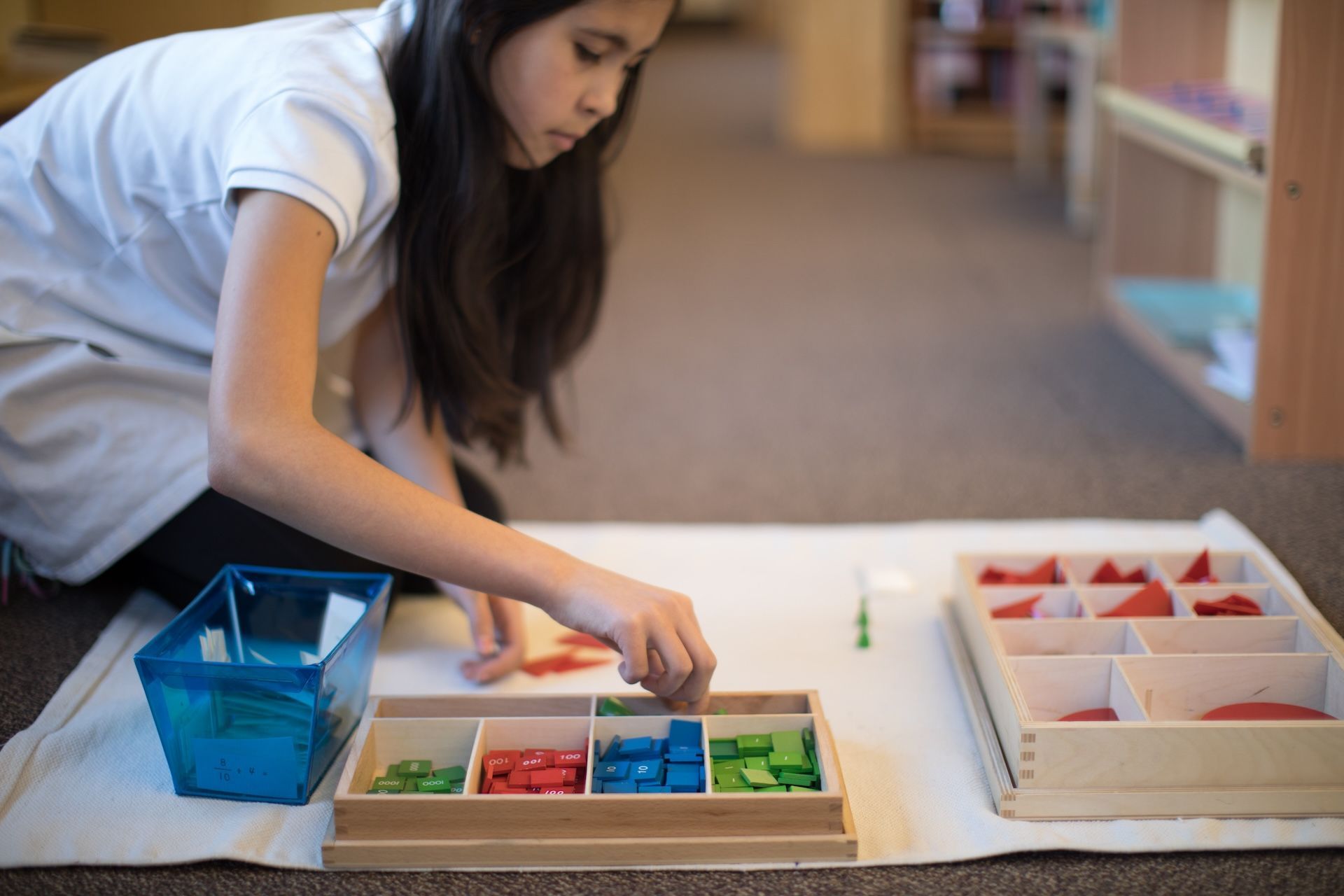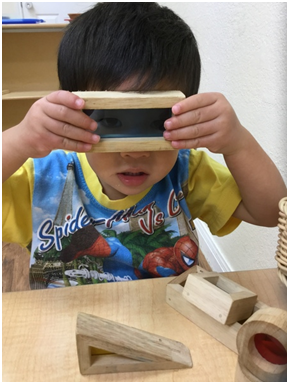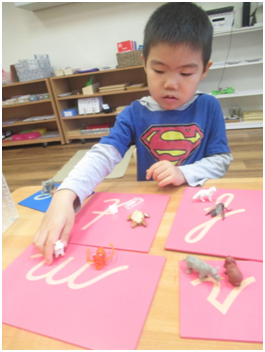


Are you new to Montessori? Have you had a child in our program for a while but find it difficult to explain Montessori in a nutshell? This educational philosophy is more than meets the eye, and it can be easy to get bogged down in the details when trying to explain it to someone. While we could talk about Montessori all day, sometimes it’s helpful to have a succinct article both to learn from and to share with others. Many people have heard of Montessori, but there are plenty of misconceptions and misinformation out there!
Check out our ten points that help explain what Montessori is really all about.
1. We follow the child.
This means we don’t teach the same skill to a whole classroom of children at once. Each individual enters our school with different knowledge and levels of readiness, and it’s our job to help them along their own path. We don’t see education as a means of cramming identical prescribed information into the minds of each child, but rather as an opportunity to cultivate joyful learning, curiosity, and independence. Sure, there are basic skills that we all need to learn, but we don’t all learn them at the same time or in the same way. When children are allowed to learn at their own pace and take time to deeply explore their interests, they understand and enjoy school more.
Dr. Maria Montessori was a physician who conducted research. She used scientific observation to better understand how children learn and continued to use observation as she developed her methods and materials. Today, in every Montessori class around the globe, guides step back and watch the children in their classrooms. They notice what the children are doing, take notes, and adapt their plans accordingly. The data they collect drives individualized instruction.
While we fully embrace each child as an individual, it’s fair to state that humans tend to follow a basic standard path of development. Montessori classified different stages of life as planes of development , and each plane is defined by specific characteristics. These planes are part of why we utilize multi-age classrooms, and they help us structure our classroom environment and tailor our teaching approaches so that they match where children are developmentally.
Dr. Montessori also developed a theory of sensitive periods . These are times in a child’s life where they are particularly primed to learn certain things. Montessori guides know approximately when to anticipate various sensitive periods and what to do to support that critical learning.

4. The environment is key.
We believe a well-prepared classroom environment is a better teacher than direct instruction from any adult. Our guides take great care to create a setting in which the children they serve are free to learn, explore, and to develop independence and positive work habits. Our classroom environments are neat, spacious, full of natural light, and pleasing to the eye. We don’t hang distracting posters with loud colors on our walls, but instead display art and other carefully chosen pieces that will inspire the children and beautify the space. In a Montessori classroom you will see living things - both plants and animals - that the children admire and learn to care for. Even the furniture is arranged to serve the children instead of the adults.
The rumors are true: Montessori students are given a lot more choice than children in conventional school settings. But it’s important to note that the choice is given carefully and with plenty of forethought in order to cultivate independence while keeping children safe and guiding them to learn. One tip we like to offer parents who want to try this more at home is to give your child two choices that would both lead to desirable outcomes. This means you get to maintain order while they feel empowered by your trust in their abilities to decide for themselves.
A high fidelity Montessori program will make sure all their guides are well-trained. Commonly accepted credentials are approved by two main organizations: AMI and AMS. It’s important to keep in mind that anyone can open a school and call it “Montessori”, but that doesn’t make it so. Guide training is rigorous, comprehensive, and is completed in addition to a college degree.
Traditionally made of natural materials, our learning environments are outfitted with specially designed materials that help children learn and work independently. Guides demonstrate how to use each material, and children are then free to select if from a shelf to repeat as often as desired. Materials are autodidactic, meaning they generally have a built-in control of error. There is only one way to use a material correctly, and children are able to correct their own mistakes in the moment. Materials are designed to be more concrete when a child is younger, and move gradually toward more abstract concepts as they grow, so that they are eventually able to work without the materials, but with a solid understanding of basic skills.
Adults are often amazed at the level of academics students learn at a young age in Montessori classrooms. We absolutely believe children are capable of more than most settings give them credit for, but it’s important to note that learning doesn’t stop there. We believe in educating the whole child, which means appealing to and supporting their growth socially, emotionally, and physically. There are specific structures in place to ensure this happens for each and every child.
Montessori began as a way to educate children, but it has become so much more than that. The basic principles can be applied by parents at home, but they can also be applied to the lives of adults. Some organizations are even taking a closer look at how Montessori might benefit elders and people living with dementia to lead richer and more independent lives. It’s all about meeting people where they are, celebrating individuality, and working to contribute our special talents to the greater good.
As Montessorians, we know what works. For over 100 years we have seen our methods support generations of children and families, so we make sure to preserve our methods and materials. That being said, the world is a rapidly changing place, and any good educator keeps an eye on current research to make sure it aligns with their practices, or to consider if changes might be beneficial to the children we serve.
Hopefully this article has given you a clearer understanding of Montessori philosophy and what makes our approach so special. Please feel free to reach out with any questions, and we hope you’ll share this with others!


We invite you to visit our school, meet the teachers, and observe the children in their classrooms. We encourage you to ask questions and learn about the opportunities available at all levels of our programs.
LakeCreek Montessori International School
10127 Lake Creek Parkway, Austin, Texas, 78729
Powered by Nido Marketing